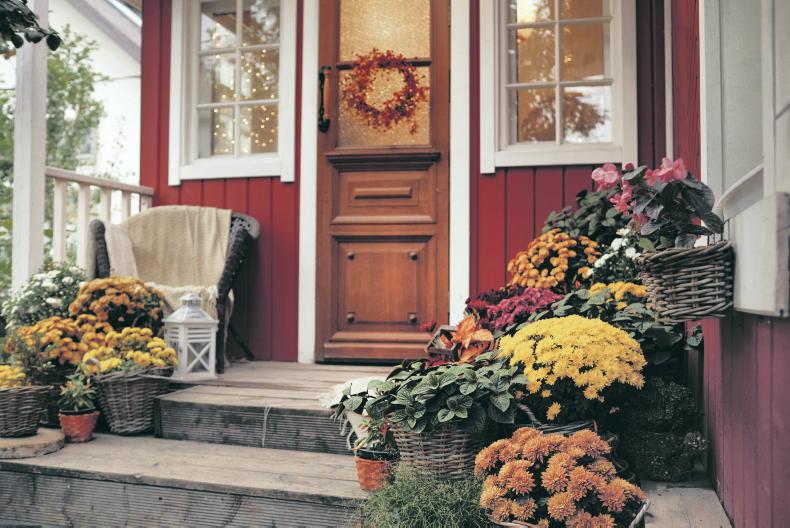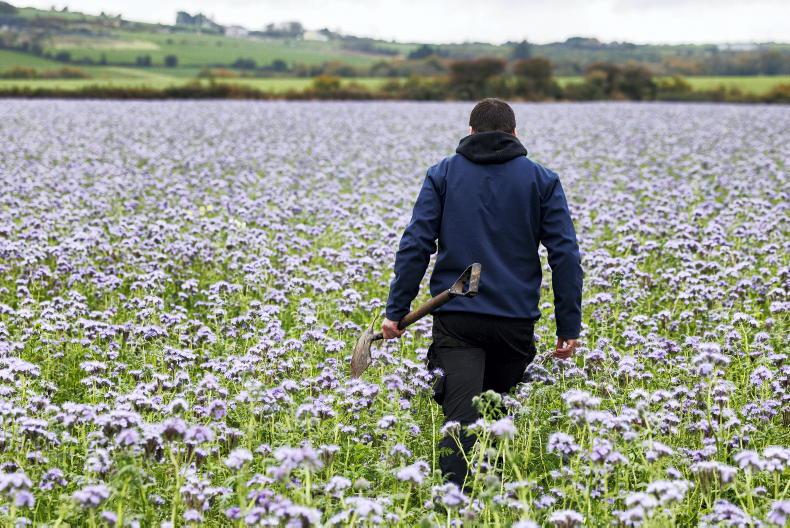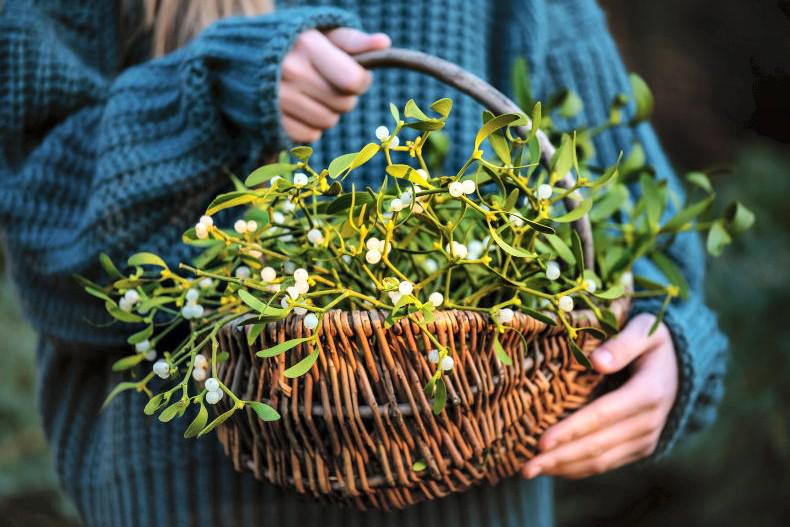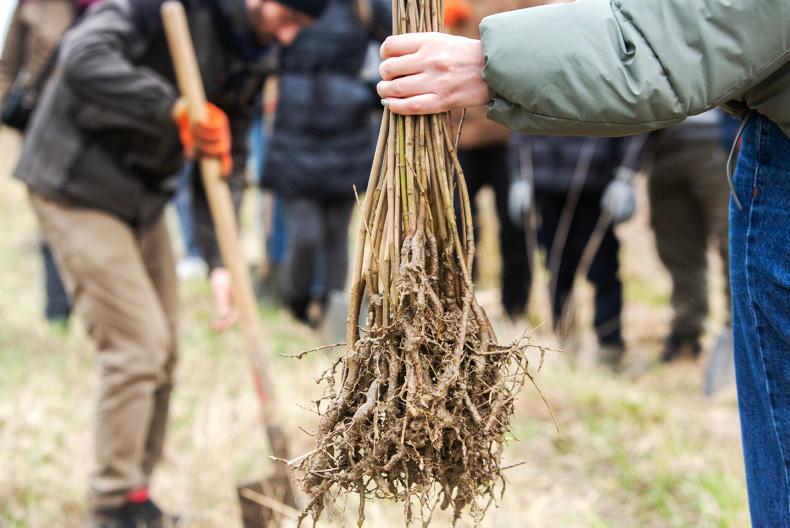Trees that make January less dreary in the garden are always worth considering. I’ve never been a huge fan of conifers, but as I potter about in my garden this month, I find myself wondering why I haven’t planted more of them. As garden plants, they have been long out of favour and under-appreciated.
Just now, when most gardens tend to be comparatively bare and lacking in colour, some strategically placed, evergreen conifers can make a valuable contribution of colour, texture and structural interest.
Their sculptural shapes – ranging from slender to wide-spreading, from upright to weeping – often show up best in winter. There are pillar shapes, cones and pyramids, neat globes, bun shapes and ground-hugging, carpeting types.
Coming in a range of sizes from miniatures and dwarfs through to majestic specimen trees, all have their places and uses in gardens of all sizes. Most conifers are reliably hardy and their maintenance-free attributes should add to their appeal.
Colour variation
They also vary in colour from greens of all hues through to shades of blue, grey, yellow and glowing gold, as well as variegated. Some conifers, such as Cryptomeria japonica ‘Elegans’ and Microbiota decussata, take on red or purplish tints in winter.
When used amongst deciduous shrubs and perennials, many conifers provide a wonderful, complimentary foil for winter-flowering shrubs, plants with winter seedheads or the bleached, papery skeletons of ornamental grasses.
The impact of coloured-stem willows and cornus is also significantly stronger when displayed against a backdrop of evergreen conifers.
Those with strong forms tend to be the most eye-catching and, in our garden, pillar-shaped Thuja occidentalis ‘Emerald’ rises out of an understorey of chestnut-brown astilbe seedheads to create a strong focal point during winter.
This tall, slender, upright conifer has a small footprint and is useful as a vertical accent and for adding height where space is limited.
Forming a compact and distinctive egg shape, we also grow Thuja orientalis ‘Aurea Nana’ for its sculptural form. It needs no pruning to maintain its unique shape.
Reaching an eventual height and spread of around one metre, this fantastic dwarf conifer features bright, yellow-green foliage to cheer even the dullest days. It also makes a good container candidate.
Smaller garden conifers
Another first-class conifer for the smaller garden is Picea glauca albertiana ‘Conica’. Its pyramidal silhouette contributes a valuable presence on our rockery embankment through winter.
For those who think conifers never change with the seasons, the young growth of this compact spruce emerges vivid, almost luminescent green in spring and makes a fabulous contrast against the dark green older leaves.
Some small conifers and yews are excellent for clipping into fanciful shapes. In recent years, I have begun cloud pruning a mature specimen of Chamaecyparis obtusa ‘Nana Gracilis’, gradually sculpting the plant from one large, rounded shape into one that has many rounded parts.
The initial aim was to arrive at something that looks like a cloud but the reality is evolving more akin to poodle-pruning, resembling the ball shapes that some poodles have when groomed.
Many forms of coniferous pines are good in gardens too. Large ones, such as our native Scots pine, Pinus sylvestris, with attractively textured, red-brown bark is a nice choice for big gardens.
The dwarf mountain pine, Pinus mugo, is a fine, small tree for smaller gardens, conveying all the rugged beauty of its larger relatives.
The dense, needle-like foliage of the cultivar ‘Carsten’s Wintergold’ becomes increasingly suffused with gold as winter progresses. Plant it with Muscari armeniacum to make a vivid display alongside the brilliant, deep blue flowers in late spring.
One of my favourite specimen conifers for the larger garden is the Japanese cedar, Cryptomeria japonica ‘Sekkan-sugi’. It forms a neat, conical shape with semi-pendulous branches and striking, golden-white foliage through winter.
As soon as ground and weather conditions are more favourable for planting, I will be adding a long sought-after Brewer spruce, Picea breweriana to our collection. It will eventually form a large, stately tree with drooping curtains of dark green foliage that convey an almost ghostly appearance.
With such a variety of conifers to choose from, it’s important to select the right ones for your garden. Always check the mature size and shape of the tree. Keep in mind that plant labels in garden centres often quote conifer sizes as the expected height and spread of the plant after 10 years, but that may not be the ultimate size.
When planting, make sure to leave space for a conifer to develop in future years, and when choosing a planting site, avoid wet ground as most conifers will die of root diseases in wet or heavy soil.
Q&A: How do I prevent leaf spot?

Remove all affected leaves to slow infection.
The leaves of my hellebores are covered in ugly, brown-black blotches which are detracting from their pretty flowers. What can I do? – Maureen, Co Donegal
Hellebore leaf spot is a common fungal disease of many hellebore species. It infects leaves and stems giving rise to roundish, dead, brown spots. The fungus thrives in damp conditions and the spores are spread by rain and wind.
The fungus perpetuates on the plant over the summer and autumn and a new round of infections is initiated at times when new plant growth is occurring.
Good garden hygiene is the best defence against the spread of this disease. Remove and destroy all affected leaves promptly to eliminate them as sources of further infection. Do not put them on your compost heap.
Planting: Establish new colonies of snowdrops and hellebores by buying plants in flower, so you can choose the prettiest blooms.
Service: Give your lawnmower a basic service or take it to a dealer for maintenance while it’s not in use.
Feeders: Keep bird feeders full of high-energy food such as peanuts, sunflower hearts and suet products. Scrub and clean out bird feeders regularly to maintain hygiene.
Soil: When conditions are suitable, spread a 5-8cm layer of manure or garden compost over weed-free beds and borders to improve soil structure, aid moisture retention and suppress weed growth.
Trees that make January less dreary in the garden are always worth considering. I’ve never been a huge fan of conifers, but as I potter about in my garden this month, I find myself wondering why I haven’t planted more of them. As garden plants, they have been long out of favour and under-appreciated.
Just now, when most gardens tend to be comparatively bare and lacking in colour, some strategically placed, evergreen conifers can make a valuable contribution of colour, texture and structural interest.
Their sculptural shapes – ranging from slender to wide-spreading, from upright to weeping – often show up best in winter. There are pillar shapes, cones and pyramids, neat globes, bun shapes and ground-hugging, carpeting types.
Coming in a range of sizes from miniatures and dwarfs through to majestic specimen trees, all have their places and uses in gardens of all sizes. Most conifers are reliably hardy and their maintenance-free attributes should add to their appeal.
Colour variation
They also vary in colour from greens of all hues through to shades of blue, grey, yellow and glowing gold, as well as variegated. Some conifers, such as Cryptomeria japonica ‘Elegans’ and Microbiota decussata, take on red or purplish tints in winter.
When used amongst deciduous shrubs and perennials, many conifers provide a wonderful, complimentary foil for winter-flowering shrubs, plants with winter seedheads or the bleached, papery skeletons of ornamental grasses.
The impact of coloured-stem willows and cornus is also significantly stronger when displayed against a backdrop of evergreen conifers.
Those with strong forms tend to be the most eye-catching and, in our garden, pillar-shaped Thuja occidentalis ‘Emerald’ rises out of an understorey of chestnut-brown astilbe seedheads to create a strong focal point during winter.
This tall, slender, upright conifer has a small footprint and is useful as a vertical accent and for adding height where space is limited.
Forming a compact and distinctive egg shape, we also grow Thuja orientalis ‘Aurea Nana’ for its sculptural form. It needs no pruning to maintain its unique shape.
Reaching an eventual height and spread of around one metre, this fantastic dwarf conifer features bright, yellow-green foliage to cheer even the dullest days. It also makes a good container candidate.
Smaller garden conifers
Another first-class conifer for the smaller garden is Picea glauca albertiana ‘Conica’. Its pyramidal silhouette contributes a valuable presence on our rockery embankment through winter.
For those who think conifers never change with the seasons, the young growth of this compact spruce emerges vivid, almost luminescent green in spring and makes a fabulous contrast against the dark green older leaves.
Some small conifers and yews are excellent for clipping into fanciful shapes. In recent years, I have begun cloud pruning a mature specimen of Chamaecyparis obtusa ‘Nana Gracilis’, gradually sculpting the plant from one large, rounded shape into one that has many rounded parts.
The initial aim was to arrive at something that looks like a cloud but the reality is evolving more akin to poodle-pruning, resembling the ball shapes that some poodles have when groomed.
Many forms of coniferous pines are good in gardens too. Large ones, such as our native Scots pine, Pinus sylvestris, with attractively textured, red-brown bark is a nice choice for big gardens.
The dwarf mountain pine, Pinus mugo, is a fine, small tree for smaller gardens, conveying all the rugged beauty of its larger relatives.
The dense, needle-like foliage of the cultivar ‘Carsten’s Wintergold’ becomes increasingly suffused with gold as winter progresses. Plant it with Muscari armeniacum to make a vivid display alongside the brilliant, deep blue flowers in late spring.
One of my favourite specimen conifers for the larger garden is the Japanese cedar, Cryptomeria japonica ‘Sekkan-sugi’. It forms a neat, conical shape with semi-pendulous branches and striking, golden-white foliage through winter.
As soon as ground and weather conditions are more favourable for planting, I will be adding a long sought-after Brewer spruce, Picea breweriana to our collection. It will eventually form a large, stately tree with drooping curtains of dark green foliage that convey an almost ghostly appearance.
With such a variety of conifers to choose from, it’s important to select the right ones for your garden. Always check the mature size and shape of the tree. Keep in mind that plant labels in garden centres often quote conifer sizes as the expected height and spread of the plant after 10 years, but that may not be the ultimate size.
When planting, make sure to leave space for a conifer to develop in future years, and when choosing a planting site, avoid wet ground as most conifers will die of root diseases in wet or heavy soil.
Q&A: How do I prevent leaf spot?

Remove all affected leaves to slow infection.
The leaves of my hellebores are covered in ugly, brown-black blotches which are detracting from their pretty flowers. What can I do? – Maureen, Co Donegal
Hellebore leaf spot is a common fungal disease of many hellebore species. It infects leaves and stems giving rise to roundish, dead, brown spots. The fungus thrives in damp conditions and the spores are spread by rain and wind.
The fungus perpetuates on the plant over the summer and autumn and a new round of infections is initiated at times when new plant growth is occurring.
Good garden hygiene is the best defence against the spread of this disease. Remove and destroy all affected leaves promptly to eliminate them as sources of further infection. Do not put them on your compost heap.
Planting: Establish new colonies of snowdrops and hellebores by buying plants in flower, so you can choose the prettiest blooms.
Service: Give your lawnmower a basic service or take it to a dealer for maintenance while it’s not in use.
Feeders: Keep bird feeders full of high-energy food such as peanuts, sunflower hearts and suet products. Scrub and clean out bird feeders regularly to maintain hygiene.
Soil: When conditions are suitable, spread a 5-8cm layer of manure or garden compost over weed-free beds and borders to improve soil structure, aid moisture retention and suppress weed growth.










SHARING OPTIONS